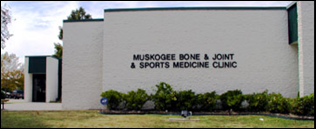The article about Pediatric Associates in CA has a nugget with a potentially outsized impact: the implication that VFC vaccines…
News 3/10/11
Grace Community Health Center (KY) secures $150,000 as part of Kentucky’s Medicaid EHR Program. Grace CHC has yet to implement EHR, but at this stage, providers only need to demonstrate the selection of an EHR to qualify for the Medicaid incentive programs. Grace CHC is implementing NextGen’s ambulatory EHR and PM products. If I were selling an ambulatory EHR, I would find every willing provider who qualifies for the Medicaid EHR incentive program and share with them just how easy it is to buy my EHR and have the government to cut them a check for $21,500. It’s a great country.
HIT benefits both small and large practices, according to a review of 154 peer-reviewed articles published from 2007 to 2010. Outgoing ONC leader David Blumenthal co-authored the analysis, which noted that 92% of the studies found the use of HIT produced overall positive effects.
Patient check-in provider Phreesia hires former Allscripts director Will Rideout as VP of sales. He was previously with Misys before its merger with Allscripts and also worked with MDeverywhere, PriCare, and Wellpath Community Health Plans.
The total first-year cost of an EMR implementation for a five-physician practice is $233,927, according to a researcher at the Institute for Healthcare Research and Improvement at Baylor HealthCare System (TX). That figure is based on the actual costs to implement GE Centricity EMR at 26 primary care practices affiliated with Baylor. The $233,927 figure averages to $46,659 per physician and includes maintenance expenses, implementation and training, and hardware. On average, end users required 134 hours per physician to prepare for the use of the system. In other words, the $44,000 maximum EHR incentive per provider from Medicare doesn’t even cover the first year of costs.
Vermont Information Technology Leaders (VITL), the REC for Vermont, adds Sage and McKesson to its list of preferred EHR partners. Other vendors include Allscripts, Fletcher Allen, athenahealth, and Greenway.
The Alabama REC picks SuccessEHS as a preferred EHR provider. In checking out the REC’s website, I don’t see mention of other vendors at this point.
The four-physician Muskogee Bone and Joint Sports Medicine Clinic (OK) selects ChartLogic’s EHR suite.
Space City Pain Specialists (TX) picks SRS EHR for its six-provider, two-location practice.
If you read HIStalk, you may have noticed we are experimenting with a new format. We are not as bleeding edge here on HIStalk Practice, so the “classic” format will remain until Mr. H completes the QA process.
St. Louis-based Curas is named the top reseller for eClinicalWorks. Curas posted 2010 revenues of $2.3 million, which represents a 55% increase over 2009.
Emdeon announces its Q4 numbers: earnings of $9.7 million on revenue of $275.7 million, compared to 2009 earnings of $3.1 million on revenue of $238.6 million. Analysts predicted revenue of $273.6 million for the quarter. Emdeon expects 2011 adjusted net income of $1.00 to $1.06/share and revenue between $1.1 billion and $1.3 billion. Despite a strong performance, the stock slipped 2.5% Wednesday to $15.62.
Physician offices added 1,500 new jobs in February, according to the Bureau of Labor Statistics. The healthcare sector as a whole added a total of 34,000 workers.
Health Affairs reports on findings from the National Demonstration Project on patient-centered medical homes. The report is generally optimistic about the new model, but my impression is that smaller practices will have a difficult time making the migration. Some of the key findings:
- Two years isn’t long enough to implement the entire model and transfer work processes, even in highly motivated practices.
- To succeed as medical homes, practices need to be nimble; capable of continuous learning; and adept at self-assessment, reflection, and improvisation.
- Implementing new technology, even for practices that have adopted EHR components, is not “plug and play” and can be challenging because of a lack integrated and interoperable systems in primary care practices.
Meanwhile, the AAFP, American Academy of Pediatrics, the American College of Physicians, and the American Osteopathic Association release 13 new guidelines for PCMH recognition and accreditation. It’s all about establishing standards.
A GfK Roper phone survey indicates that 78% of patients whose doctors use an EHR believe they get better care as a result. Over 1,000 people participated in the survey, leading me to ponder if I am the only person who never answers her home phone when I suspect surveys or telemarketers. I mean, who exactly does participate in phone surveys?






Yep, you gotta wonder about the validity of phone surveys when everyone you talk with says the same as you: telemarketers and phone surveyors never get past the caller I.D. stage.
Correction re Medicaid EHR Incentive Program: Just “selecting” the EHR is not enough to get paid. The $21,250.00/EP payment is for INSTALLING the EHR. If they already have an EHR, they can get paid for “implementing” an ONC-certified version, or for upgrading to the ONC-certified version.
[From Inga] – actually Bignurse, you may want to check this link, sent to me by another reader:
https://questions.cms.hhs.gov/app/answers/detail/a_id/10100/~/%5Behr-incentive-program%5D-do-states-need-to-verify-the-%22installation%22-or-%22a
Here is the specific wording:
Do States need to verify the “installation” or “a signed contract” for adopt, implement, or upgrade (AIU) in the Medicaid EHR Incentive Program?
States should make clear to providers when they attest for AIU what documentation they must maintain, and for how long, in case of audit. If States determine that certain provider types are a high risk for potential fraud/abuse for AIU, then they can ask for some verification of adopting, implementation or upgrading but CMS encourages that this be done in a targeted manner, with the most electronic and simple means possible and not in such a way that would be burdensome to providers. For AIU, a provider does not have to have installed certified EHR technology. The definition of AIU in 42 CFR 495.302 allows the provider to demonstrate AIU through any of the following: (a) acquiring, purchasing or securing access to certified EHR technology; (b) installing or commencing utilization of certified EHR technology capable of meeting meaningful use requirements; or (c) expanding the available functionality of certified EHR technology capable of meeting meaningful use requirements at the practice site, including staffing, maintenance, and training, or upgrade from existing EHR technology to certified EHR technology per the EHR certification criteria published by the Office of the National Coordinator of Health Information Technology (ONC). Thus, a signed contract indicating that the provider has adopted or upgraded would be sufficient.
Chartlogic and SRS are sending out press releases about 4 provider and 6 provider sales…seriously ?? They are bragging about that ?